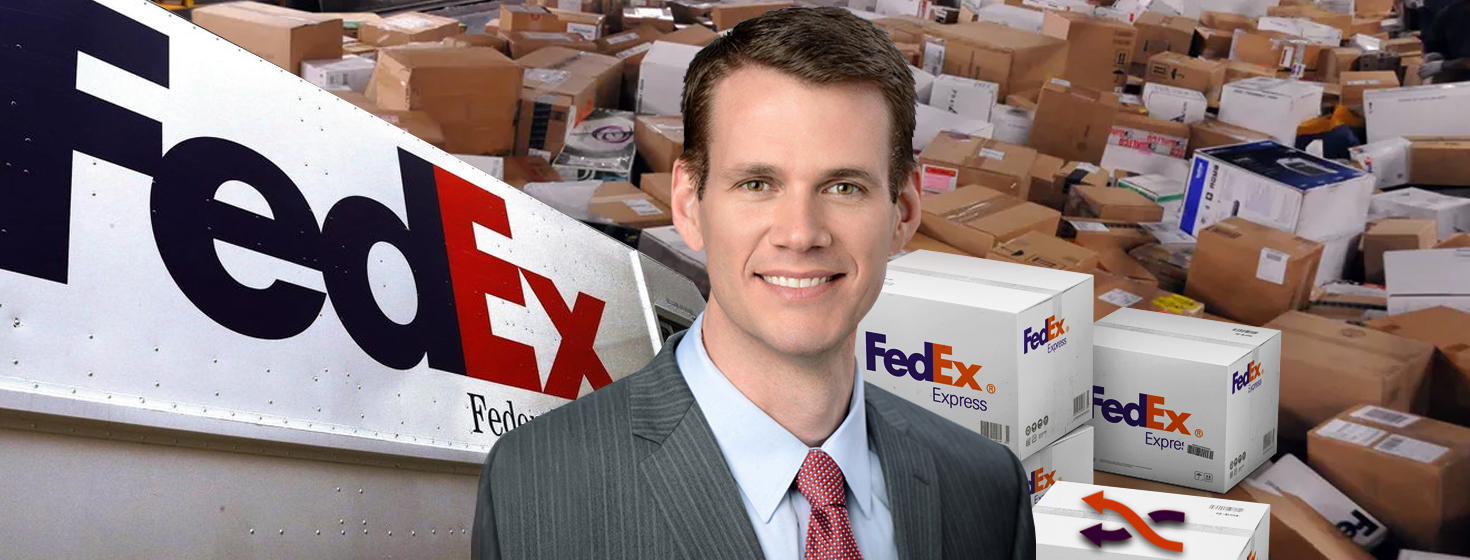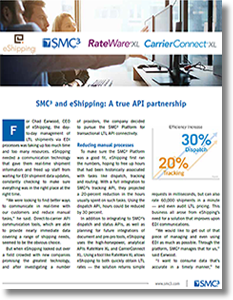Q&A with FedEx Supply Chain on LTL’s Growing Role in Reverse Logistics and Ecommerce Returns

As a direct result of the thriving ecommerce landscape, SMC³ recently talked with FedEx Supply Chain executive Ryan Kelly about reverse logistics and how less-than-truckload carriers are capitalizing on this developing trend.
Ryan Kelly, Senior Vice President at FedEx Supply Chain, recently spoke with SMC³ about the reverse logistics supply chain and how less-than-truckload carriers are trying to capitalize on the growing trend – a direct result of the booming ecommerce landscape.
Brad Parrish, Vice President, Customer Operations at FedEx Supply Chain will discuss the topic in more detail during Connections 2018 in June.
What are some current trends in the reverse logistics arena you’re seeing at FedEx Supply Chain?
Returns have traditionally been cast as a necessary but costly part of doing business, but I contend that we can reshape the way we think about reverse logistics, ultimately using returns as a way to build brand loyalty.
By viewing returns as a customer service cost designed to contribute to the long-term success of a business through the customer experience, we can examine ways to offset those marketing costs with supply chain optimization.
Many of the trends we are seeing in reverse logistics are tied to consumer expectations. While fast shipping used to be the top customer request and a high predictor of repeat purchases, both free shipping and free returns are now critical for consumers.
According to one study, 83 percent of consumers said free shipping would make them more likely to shop online, while 65 percent said free returns would make them more likely to shop online.
However, providing those free services ultimately drives costs in the e-commerce operation, forcing companies to subsidize returns and shipping to provide a great customer experience.
The returns experience is directly correlated with future purchases, as 95 percent of online shoppers are likely to shop again if returns are convenient. Based on these findings, merchants should prioritize returns so they can drive repeat purchases and foster customer loyalty.
Where does LTL fit into the retail-returns equation?
An increasing number of consumers are choosing to return their online purchases in-store, rather than ship them back to the retailer. Items that are returned to the store are often consolidated with other returned goods before they are shipped out from the store to a distribution or returns center.
Retailers are currently taking advantage of opportunities to unite the physical and digital worlds, providing customers with numerous online and in-store return options.
Due to efforts to consolidate parcel shipments and as ecommerce and in-store returns continue to grow, so too will the role of LTL and truckload carriers in moving the returned goods.
How can truckload and LTL carriers better use technology to help them optimize these e-commerce shipments?
When we discuss reverse logistics, the goal is always to maximize recovery value. It is impossible to receive the full market value that a new good can garner when dealing with returns.
Thus, there is ultimately a greater cost to offset with return shipments than with forwarding shipments.
Any time a logistics provider can consolidate return goods, and minimize the number of returns or distribution centers that those products are coming back to, they can make a win for their business. Emerging, innovative technology plays a huge role in optimizing reverse logistics.
One example of this technology is blockchain.
Recently, FedEx Chairman and CEO Frederick W. Smith implored the urgency of understanding blockchain technology and the implications it has on the transportation industry. Being able to locate and provide tracking information to customers on return shipments is critical to building the trust and transparency today’s consumers desire.
How do you see the reverse logistics market growing in the next year?
Supply chain stakeholders must be ready to pivot and innovate with rapidly evolving consumer expectations. Consumers want options for returns: They want the ability to mail in returns through drop sites or the ability to return at other convenient locations, all while receiving quick credit.
These expectations will continue to change, and supply chains must be nimble enough to address these changes in an efficient and cost-effective way.
I believe we’ll begin to see more options to return in store - much like the option FedEx offers to return to FedEx Retail Access locations in Walgreens and FedEx Office locations.
Recently, FedEx announced plans to expand its FedEx Office footprint in more than 500 Walmart locations across the country. FedEx strives to make the returns experience as convenient, routine and painless as possible for the end consumer. Consumers want convenience, and FedEx keeps consumer expectations at the forefront of continuing innovations in e-commerce.
In addition, I anticipate traditional brick-and-mortar retailers will begin adopting emerging business models, including subscription services and rental services, creating a surge in returns that supply chain professionals must be prepared to handle.
In line with subscription services, consumers order more items than what they will actually purchase. These “intentional returns” are contributing to the increased volume of returns - with 15 percent of all purchases being made for the purpose of testing and then returning. That number is up to 23 percent for all fashion purchases.
This behavior will only become more prevalent, so supply chains must be optimized to handle this influx of returns.
Related: The Rewards of Getting Returns and Reverse Logistics Right
To hear more from other industry experts, sign up today for the three-day supply chain conference Connections 2018 held June 25-27 at the Greenbrier Resort in West Virginia to learn about emerging trends, current challenges and new innovations in the supply chain.
Raise Your Supply Chain IQ
Connections 2018 | June 25 - 27 | The Greenbrier, WV
To REGISTER for SMC³’s Connections 2018, visit www.smc3connections.com
Related Article: SMC³ Announces Connections 2018 Speaker Lineup
Related Resources
Why eShipping Selected the SMC³ Platform for Transactional LTL API Connectivity New!
In this case study, Chad Earwood, CEO of eShipping, describes how they integrated the SMC³ platform for transactional LTL API connectivity, and by using the analytical APIs RateWare XL and CarrierConnect XL they are able to obtain immediate LTL rates and audit LTL pricing. Download Now!
Strategic LTL Bidding for Minimum Cost & Maximum Efficiency
This paper details how SMC³ designed Bid$ense for complete procurement transparency, and how you’ll move ahead with ease and confidence toward best-choice carrier qualification and truly strategic LTL procurement. Download Now!
The Case for a Re-Indexed LTL Benchmark Pricing System
This paper takes a deep dive into SMC³’s CzarLite XL, an advanced pricing system solution that gives shippers, logistics service providers and carriers a new neutral benchmark choice when negotiating LTL shipping rates. Download Now!
The Single Source for LTL Pricing & Transit Information
The SMC³ Platform empowers 3PLs and Shippers of any size to successfully navigate and optimize the LTL shipment arena, choose the level of computing power based on your specific needs and operating environment with a technology platform offering the best of all worlds. Download Now!
More Resources from SMC³
Article Topics
SMC3 News & Resources
SMC3 Mercury Gate Case Study - Improving Workflows and Enhancing Efficiency with LTL APIs SMC3: Is Technology a Competitive Advantage in the Modern Supply Chain Industry? Armada’s Prather examines the disconnect between the freight economy and the macro economy at SMC3 JumpStart 2024 SMC³’s Solution to the Logistics Industries Talent Problem 2024 Transportation Rate Outlook: More of the same? Refining LTL API Consumption for Optimal Efficiency and Enhanced Services Regulations Impacting Less-than-Truckload More SMC3Latest in Transportation
Why are Diesel Prices Climbing Back Over $4 a Gallon? Luxury Car Brands in Limbo After Chinese Company Violates Labor Laws The Three Biggest Challenges Facing Shippers and Carriers in 2024 Supply Chain Stability Index: “Tremendous Improvement” in 2023 Trucking Association CEO on New Biden Policy: ‘Entirely Unachievable’ Two Weeks After Baltimore, Another Cargo Ship Loses Power By Bridge Examining the freight railroad and intermodal markets with Tony Hatch More Transportation


















